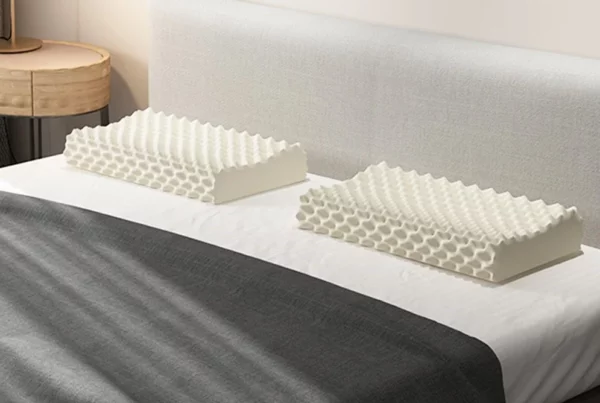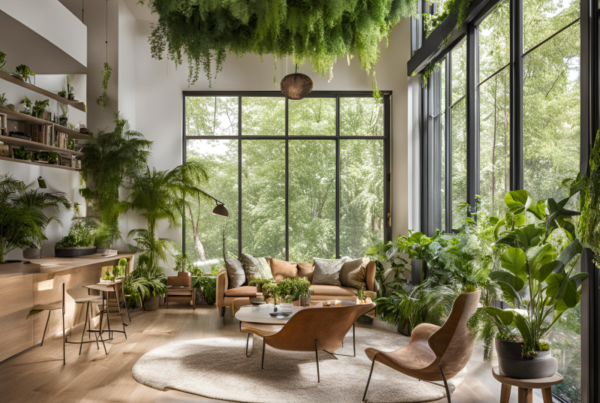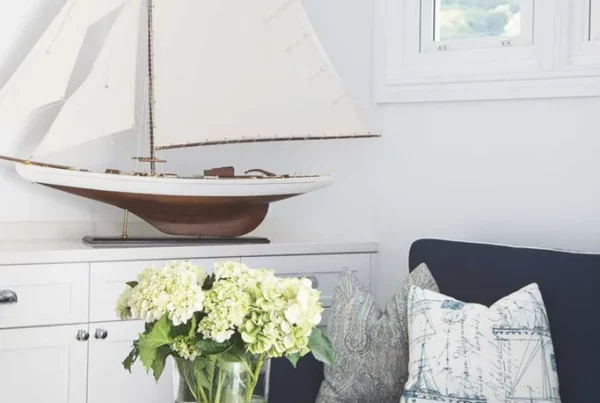In interior design, selecting the right fabrics and colors can transform a space, enhance its aesthetic appeal, and improve its functionality. However, many homeowners struggle with navigating the variety of options available and ensuring these choices not only meet their style preferences but also their practical needs.
This article provides practical guidance on fabric selection, color trends, layering techniques, and maintenance strategies. By understanding how to choose durable materials, utilize effective color palettes, and implement smart care practices, you can create inviting and long-lasting interiors that reflect your personal style while accommodating your daily lifestyle.
Table of Contents
Choosing the Right Fabric for Maximum Impact
When it comes to interior design, the choice of fabric plays a pivotal role in shaping the atmosphere of a space. Fabrics can define style, enhance comfort, and even impact how a room feels physically and emotionally. In this section, we’ll explore the various factors to consider when choosing fabrics, the types available, and tips for selecting the perfect material that aligns with your design goals.
Consider the Purpose and Functionality
Before diving into fabric selection, it’s crucial to evaluate the purpose of the space. Different areas require different fabrics based on their function and the level of wear and tear they will endure:
- Living Rooms: Look for durable yet comfortable fabrics. Options like microfiber or heavy canvas can hold up well against daily use.
- Dining Areas: Fabrics that are resistant to stains, such as treated cotton or synthetic blends, are ideal for dining chairs.
- Bedrooms: Soft, breathable materials such as cotton or linen promote relaxation and comfort.
- Outdoor Spaces: Fabrics designed with UV protection, such as solution-dyed acrylics, withstand the outdoor elements.
By aligning the fabric choice with the room’s functionality, you ensure both aesthetic appeal and practical usability.
Understanding Fabric Types
Fabrics come in a myriad of types, each with its unique characteristics. Here’s a brief overview of some popular options:
- Cotton: Known for its softness and breathability, cotton is versatile. It absorbs moisture well, making it suitable for various applications.
- Linen: This natural fabric has a slightly crisp texture and is excellent for a relaxed, airy feel. Linen is breathable, making it perfect for warm climates.
- Velvet: A luxurious choice, velvet adds depth and richness to a space. It’s excellent for drapes and upholstery, although it may require more upkeep.
- Silk: Known for its elegance, silk adds a sophisticated touch. However, it’s less durable and often used for decorative pillows or curtains.
- Microfiber: This synthetic fabric is renowned for its durability and stain resistance, making it a popular choice for family-friendly homes.
Understanding each type of fabric and its properties helps you select the most suitable one for your specific design needs.
Color Considerations
The color of the fabric significantly influences the overall mood and ambiance of a room. When choosing fabric, consider the following:
- Light Colors: Fabrics in light hues can make a space feel larger and more open. They reflect light effectively, enhancing the room’s brightness.
- Bold Colors: Vibrant fabrics can serve as statement pieces, adding personality and energy to your decor. They work well as accents in neutral spaces.
- Patterns and Textures: Patterns can add visual interest to your design scheme. A carefully chosen textured fabric can elevate a simple color palette.
Balancing color and pattern can create a harmonious environment that aligns with your vision.
Durability and Maintenance
Consider the durability and maintenance needs of your chosen fabric. High-traffic areas demand more robust materials, while delicate fabrics may be suited for less used spaces. Here are some tips:
- Read Labels: Check for cleaning codes and recommendations on the fabric’s care to ensure it fits your lifestyle.
- Research: Look into the fabric’s durability against fading, tearing, or staining to assess its long-term performance.
- Invest in Performance Fabrics: If stains are a concern, consider performance fabrics designed to resist spills and stains.
Choosing a fabric that meets your lifestyle needs ensures longevity and minimizes maintenance efforts.
Conclusion
Choosing the right fabric is crucial for achieving maximum impact in your interior design projects. By considering functionality, understanding the variety of fabrics available, and paying attention to color and durability, you can create a space that truly resonates with your aesthetic and serves your practical needs.
For more insights on fabric choices and interior design, explore reputable sources like The Spruce.
Color Trends That Transform Any Room
Color is not just a visual element; it has the power to transform our emotional state, alter perceptions of space, and create distinct atmospheres. In interior design, leveraging the right color trends can lead to dramatic changes in a room’s appearance and feel. This exploration of current and emerging color trends will equip you with the knowledge to design spaces that are not only stylish but also resonate with the occupants’ emotions and behaviors.
1. Earthy Tones: Nature’s Embrace
Following the increasing desire for sustainability and well-being, earthy tones are making their mark. Colors inspired by nature—such as warm browns, soft greens, and muted terracottas—create an inviting and grounded atmosphere. These shades evoke feelings of tranquility, making them ideal for spaces dedicated to relaxation, such as living rooms and bedrooms. The depth provided by these colors encourages a connection to the natural world.
- Use earthy colors in combination with natural materials like wood and stone to enhance the organic feel.
- Accent walls in deep forest greens or rich browns can anchor a room and provide a stunning contrast to lighter furnishings.
2. Bold Jewel Tones: Dramatic Statements
For those looking to make a statement, bold jewel tones are the way to go. Colors like emerald green, sapphire blue, and ruby red add richness and vibrancy to any room. These tones are perfect for accent pieces or as dominant colors in a space, particularly in formal dining rooms or luxurious bedrooms where an opulent atmosphere is desired.
- Pair jewel tones with metallic accents like gold or silver to enhance their luxurious feel.
- Utilize these colors in textiles, such as curtains, cushions, or upholstered furniture, to instantly elevate the room’s aesthetic.
3. Soft Pastels: The Gentle Touch
Soft pastels are emerging as a popular choice for creating serene and calming environments. Colors like powder blue, blush pink, and mint green lend themselves well to modern, minimalist spaces. These shades can open up smaller rooms, making them appear larger and more airy.
- Combine pastels with white or light wood tones for a fresh, contemporary look.
- Incorporate pastel colors in kitchen walls or bathroom tiles to evoke cleanliness and tranquility.
4. Monochromatic Palettes: Cohesive Calm
Another trend gaining traction is the use of monochromatic palettes. By varying shades and tones of a single color, you can create a harmonious and cohesive look throughout a room. This technique enhances depth without overwhelming the senses, making it perfect for spaces like bedrooms and home offices where focus is essential.
- Choose a dominant color, then explore its lightest and darkest shades for a sophisticated gradient effect.
- Incorporate varying textures—like fabrics, paint finishes, and materials—to add depth and interest to the monochromatic scheme.
5. Accent Colors: Sparking Interest
Accent colors are essential for breaking the monotony in a room. Incorporating vibrant splashes of color through accessories—such as cushions, artwork, or rugs—can redefine spaces without a complete overhaul. Choosing the right accent color can make a space feel more dynamic and engaging.
- Consider using complementary colors to create a striking visual contrast with your primary color scheme.
- Rotate accent colors seasonally to keep your space feeling fresh and current without extensive redecorating.
As we continue to embrace the emotional connection that colors foster in interior spaces, understanding their impact will help homeowners and designers alike create stunning and transformative environments. Whether opting for earthy tones that evoke grounded peace or bold hues that assert confidence, the right color choices can truly revolutionize any room.
For more in-depth information on color trends in interior design, check out this article from House Beautiful, which dives deeper into each paint palette and its application in contemporary design.
Layering Techniques to Enhance Depth and Texture
In the world of interior design, layering techniques are crucial for creating spaces that feel inviting, dynamic, and rich in character. By layering different textures, colors, and materials, you can add depth to your décor and help individual elements stand out. This section delves into effective layering techniques that will not only enhance the visual intrigue of your rooms but also contribute to an atmosphere that feels curated and intentional.
Understanding the Importance of Texture
Texture plays a pivotal role in design, creating tactile and visual interest. Without varying textures, a space can appear flat and uninspired. To elevate your décor, consider integrating multiple textures using furniture, accessories, and fabrics that offer different feels and visual appearances. Here are some ideas:
- Soft Fabrics: Use plush fabrics like velvet or chenille for cushions or throws to introduce warmth.
- Natural Elements: Incorporate materials such as wood, stone, or rattan to provide a grounded, organic feel.
- Metal Accents: Integrate metallic finishes or items to add a touch of shine and contemporary flair.
- Glass and Mirrors: Use reflective surfaces to create a sense of space and elegance, enhancing the overall depth.
Layering Colors for Visual Appeal
Utilizing a layered color palette can dramatically transform your space. Instead of relying on a single color theme, consider the following strategies to create visual interest:
- Monochromatic Layers: Stick to varying shades of a single color. For example, using different tones of blue can create a harmonious and serene environment.
- Complementary Colors: Layer colors that are opposite each other on the color wheel for a vibrant contrast that enlivens the room.
- Accent Colors: Introduce pops of color through accent pieces like art, cushions, or rugs to create dynamic focal points.
Strategically Placing Furniture and Accessories
The arrangement of furniture and accessories is essential in layering effectively. Here are some techniques to consider:
- Varying Heights: Incorporate furniture of different heights—such as low sofas paired with tall floor lamps or bookshelves—to create intrigue and guide the eye throughout the room.
- Grounding Elements: Utilize larger pieces like area rugs to anchor furniture and delineate spaces, especially in open-concept areas.
- Layering Accessories: Use smaller decor items like vases, books, or framed photos on cluster surfaces such as tables and mantles to enhance detail and richness.
The Role of Lighting in Layering
Don’t overlook the power of lighting as a tool for layering. It plays a significant role in how textures and colors interact in your space.
- Ambient Lighting: Utilize overhead lighting to provide overall illumination.
- Task Lighting: Implement specific lighting for functional areas, ensuring these contrasts add depth.
- Accent Lighting: Use spotlights or table lamps that highlight textured surfaces or decor pieces, drawing attention to layered elements.
Incorporating Textiles in Layering
Textiles are one of the most versatile ways to layer and enhance depth in a room. Here are creative ways to incorporate them:
- Layered Rugs: Experiment with layering smaller rugs over larger ones to introduce color and texture.
- Cushions and Throws: Mix and match different patterned cushions and throws on seating for a tailored comfort experience.
- Window Treatments: Combine sheer and heavy drapes for a soft and inviting window space that showcases layers.
Layering techniques not only elevate the aesthetic appeal of your space but also contribute to creating a welcoming atmosphere that reflects your personal style. By integrating various textiles, colors, and textures, while mindfully arranging your furniture and enhancing your lighting, you can achieve a well-balanced and visually captivating interior.
 Moving Forward
Moving Forward
As you explore the art of layering, it’s essential to keep in mind the maintenance and longevity of these elements in your interior design journey. Understanding how to care for your layered fabrics and decorations will ensure your space remains both beautiful and functional.
Smart Tips for Maintenance and Longevity
When it comes to enhancing your home, selecting the right fabrics and materials is only the first step. To ensure your interiors remain stunning and inviting for years to come, incorporating smart maintenance strategies is essential. This section delves into practical tips and insightful strategies that not only safeguard your investments in decor but also maintain their aesthetic appeal over time.
Understanding the Nature of Your Fabrics
Different fabrics require different care levels, and knowing the specific needs of your materials can prolong their lifespan significantly. Here are some important points to consider:
- Cotton and Linen: These natural fibers are breathable and easy to clean, but they wrinkle easily. Regular washing with lukewarm water and mild detergent will keep them fresh. Ironing with steam can help remove any creases and restore their crisp look.
- Velvet: While luxurious and visually stunning, velvet can easily show signs of wear. Always vacuum with a soft brush attachment instead of scrubbing, and avoid direct sunlight to prevent fading. If spills occur, gently blot—not rub—the area to prevent damage.
- Leather: Renowned for its durability, leather still requires regular care. Use a specialized leather cleaner and conditioner to keep it supple. Always wipe off spills immediately and use coasters under drinks to prevent staining.
Implementing Regular Cleaning Routines
Establishing a regular cleaning routine helps keep your fabrics looking fresh and minimizes the risk of permanent stains or damage. Consider the following strategies:
- Routine Vacuuming: Invest in a quality vacuum cleaner with upholstery attachments. Regular vacuuming removes dust, pet hairs, and allergens that can deteriorate fabric fibers over time. Make it a habit to vacuum your upholstered furniture once a week.
- Spot Cleaning: For unexpected spills, always have a spot cleaning kit on hand, including a gentle fabric-safe cleaner. Test any cleaner on a hidden spot before applying it to the entire area to prevent discoloration.
- Professional Cleaning: Annually invest in a professional cleaning for larger pieces like sofas or carpets. Specialists in fabric care can ensure deep cleaning that extends the life of your upholstery and fabrics.
Protective Measures That Make a Difference
In addition to regular cleaning, taking protective measures can significantly enhance the durability of your fabrics:
- Fabric Protectors: Applying a fabric protector can shield your upholstery from stains and spills. Consider products that create a barrier against moisture and dirt without changing the fabric’s appearance. Always follow the manufacturer’s instructions for the best results.
- Rugs and Cushions: Use area rugs in high-traffic areas to reduce wear on flooring and furniture. Similarly, incorporating throw pillows and blankets not only adds comfort but also protects your primary upholstery from daily usage damage.
- Sun Shields: To minimize fading and degradation from UV rays, consider using window treatments like blinds, curtains, or UV-blocking films. This helps preserve the vibrancy of colors in fabrics exposed to direct sunlight.
Check for Wear and Tear Early
Being proactive about identifying wear and tear can save you from bigger repair jobs later. Regularly inspect your fabrics for:
- Fraying Edges: Check cushions, throws, and drapes for fraying edges. Early stitching can prevent further damage.
- Loose Threads: Snip loose threads gently to prevent further unraveling without pulling on the fabric excessively.
- Stains or Moisture: If you notice discoloration or damp spots, address these issues immediately to avoid mold or further staining.
Seasonal Care Adjustments
Certain seasons might require special attention to maintain the integrity and appearance of your fabrics:
- Winter Care: In colder months, dry air can lead to fabric brittleness. Use a humidifier to maintain moisture levels, particularly in homes with central heating. This will help keep fabrics soft and less prone to cracking or splitting.
- Summer Considerations: Increased humidity can encourage mold growth. Regularly air out cushions and cover outdoor fabrics when not in use, and clean any potential moisture accumulation promptly.
By adopting these smart tips for maintenance and longevity, you can ensure your investment in interior fabrics remains valid for years to come. Taking the time to understand your materials, cleaning them regularly, implementing protective measures, and being proactive about wear will lead to a beautifully maintained and inviting home environment. For comprehensive insights on upholstery care, check out this informative guide on velvet fabric care from Ice Fabrics. Choosing the right fabrics and colors is essential for achieving impactful interior design. Consider functionality, durability, and maintenance needs when selecting fabrics, especially for high-traffic areas. Earthy tones create a serene atmosphere, while bold jewel tones make dramatic statements. Soft pastels and monochromatic palettes promote cohesion, and accent colors can invigorate a space without significant renovations.
To maintain the beauty and longevity of your textiles, establish regular cleaning routines tailored to each fabric, and utilize protective measures like fabric protectors and area rugs. Regularly inspect for wear and tear, and adjust care strategies seasonally to adapt to environmental changes. By understanding your materials and applying mindful maintenance, you can ensure your home remains inviting and stylish for years to come.


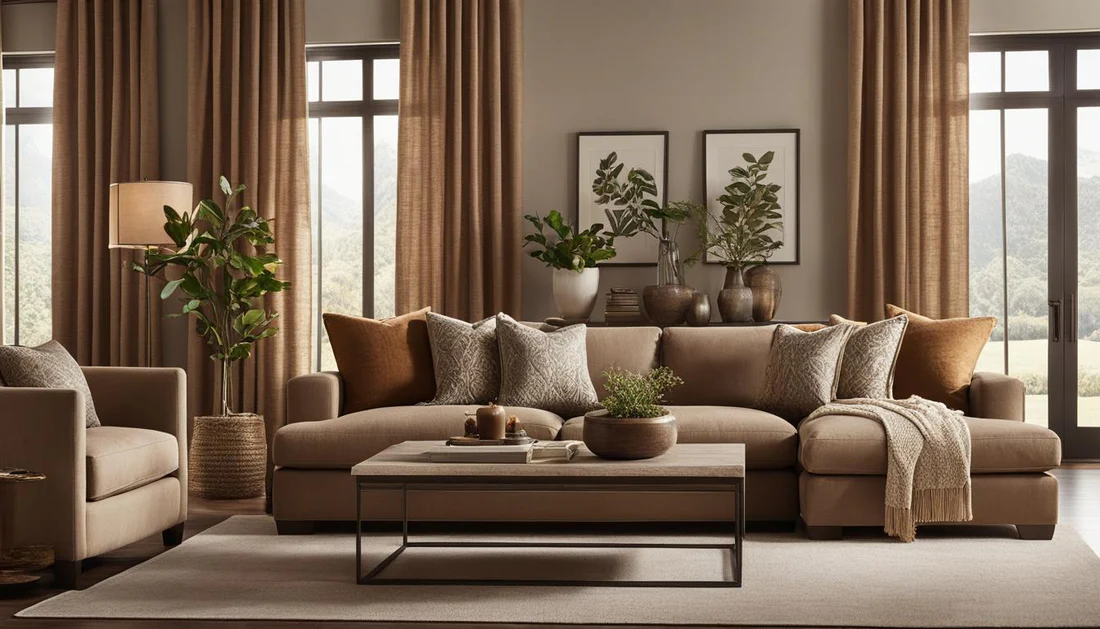
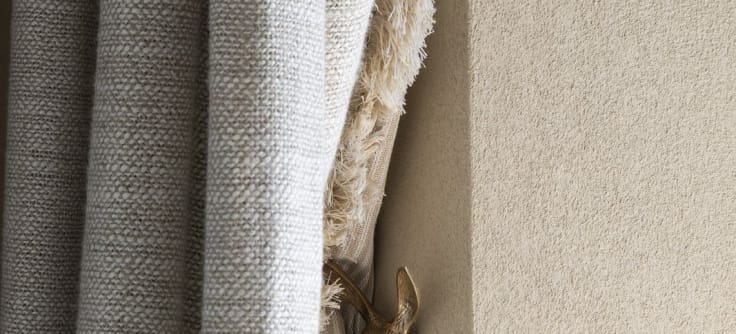 Moving Forward
Moving Forward